Could the live caption and subtitles feature in Skype tell how accurate your Japanese is?
December 17, 2018
On December 3, Microsoft announced the launch of live captions & subtitles feature for Skype. The feature is already available for Japanese version. I think this new feature is useful for all Japanese learners, so I will introduce to you this time.
How to use the feature?
Please refer to the following SKYPE’s official sites.
Japanese version
English version
What’s the level of accuracy of the feature?
Frankly speaking, the feature is not so perfect yet.
Even when two Japanese people converse in Japanese, it was inaccurate.
I think that the feature’s usefulness is limited by its accuracy, therefore, I do not recommend using the feather to make an online meeting, to transcribe its contents, and to make minutes.
How to use the feature effectively
In a free talk, accuracy level was not so high, however, it was much better when reading the script. So it might be a good way to use the feature for practicing reading fluency. If Skype puts captions incorrectly, it means the way of reading Japanese is not perfect, and the listener may misunderstand. The feature would also help you to analyze your weak points in reading Japanese.
These are the live captions I tried for the first time.
Please check them in the picture.
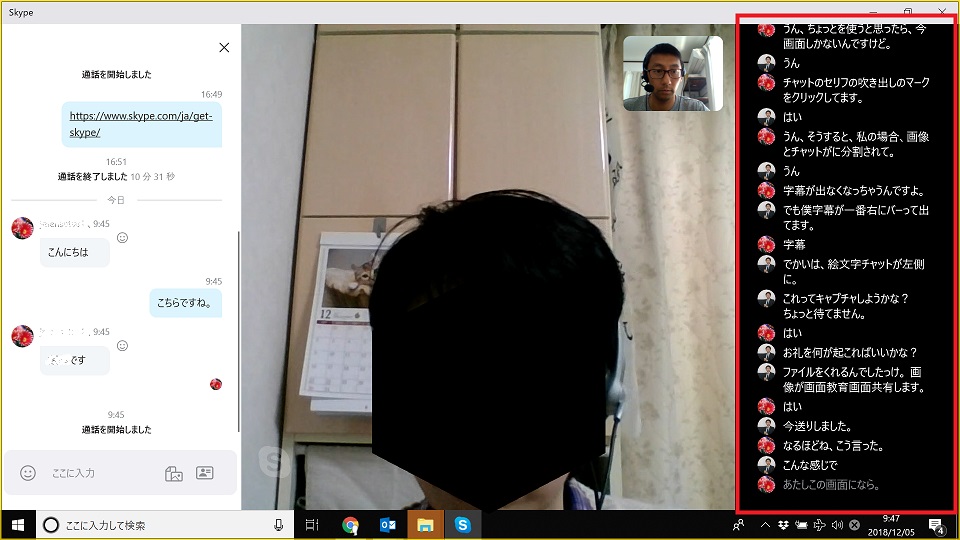
Note: This information is as of December 10, 2018. Let’s pay attention to the further improvement.
It is recommended to read Japanese business magazines for business Japanese learning. Newspapers are also good, but since there are many new topics, the information can be sporadic, so the magazine is better to intensively read topics of interest in feature articles etc. Besides, information is useful for business, so it is two birds with one stone.
So, I tried searching for business magazines at Fujisan, a Japanese No1 online bookshop for magazine’s, but I hit 1375 cases! Too many to choose best one. Although it is recommended to go to a bookstore and actually see the contents, it is also hard to compare all magazines.
So this time, I will introduce the top 5 business magazines sold in Japan and 5 other recommended magazines, totaling I selected 10 magazines.
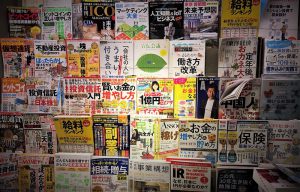
The sales circulation TOP 5 from January to March 2018 is as follows. (*2)
No1: PRESIDENT (319,933 copies)
In 1963 it was launched as the Japanese edition of FORTUNE USA. For managers and business leaders. Publication twice a month. It deal with a wide range of subjects ranging from high quality business information, skill ups and lifestyle.
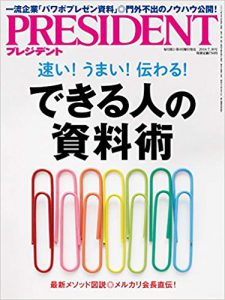
Buy this at Amazon / Buy this at Fujisan
No2: Weekly DIAMOND (週刊ダイヤモンド:125,833 copies)
First published in 1913. A business weekly magazine that is most popular in bookstores. In addition to economic, financial, and corporate information, it has plenty of diverse serial articles and columns.
There are also many contents for young employees.
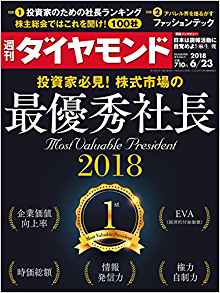
Buy this at Amazon / Buy this at Fujisan
No3: Weekly TOYO KEIZAI (週刊東洋経済 : 90,250 copies)
First published in 1895. Feature articles on seasonal themes and of various companies, there are many useful information for all generation including a student in job hunting. You can grasp the latest topic of the Japanese economy.
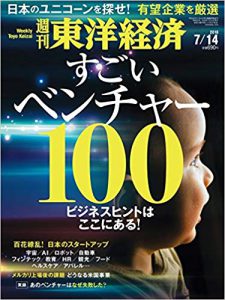
Buy this at Amazon / Buy this at Fujisan
No4: THE21 (49,400 copies)
First published in 1984. Monthly magazine. Many information is useful for self-improvement.
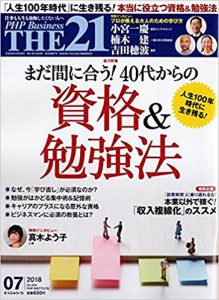
Buy this at Amazon / Buy this at Fujisan
No5: DIAMOND Harvard Business Review (ハーバード・ビジネス・レビュー : 20,700 copies)
The only comprehensive management magazine in Japan that fully cooperated with Harvard Business Review magazine in the United States. For managers and business leaders.
Sharp suggestions and explanations coming from opinion leaders are popular. It has plenty of information on strategy and analysis.
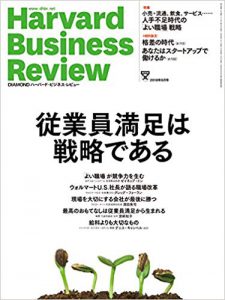
Buy this at Amazon / Buy this at Fujisan
Since all of these are dealing with a wide range of information, you can choose from your interests and positions of work.
Although it did not enter the top 5 in the number of sales, there are also many magazines that I would like to recommend. The following are some of them.
NIKKEI TRENDY (日経トレンディ)
Trendy information magazine introducing the latest trends and latest products. There are many easy-to-read contents.
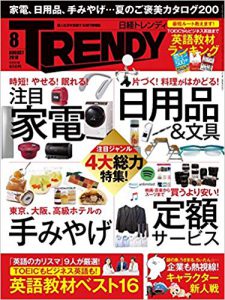
Buy this at Amazon / Buy this at Fujisan
Monthly JIGYO KOUSOU (月刊事業構想)
Professional journal on corporate activity, regional creation, innovation. Monthly magazine. For managers / new business planning staff.
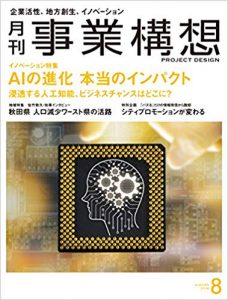
Buy this at Amazon / Buy this at Fujisan
SENDEN KAIGI (宣伝会議)
Specialized magazine of advertisement, advertisement, and marketing. Published twice a month.
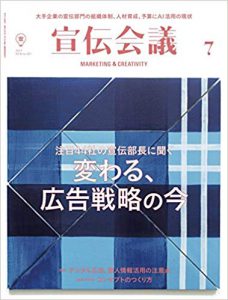
Buy this at Amazon / Buy this at Fujisan
INTERNET SALES (ネット販売)
As its name suggests, it is a specialty magazine for online sales. Monthly magazine. Since it is not sold at a bookstore, go to the following link for purchase.
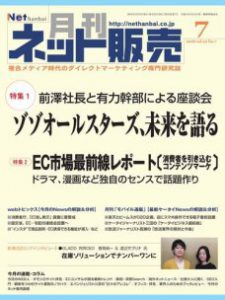
MARR(マール)
The only M & A special monthly magazine in Japan. For people involved in M & A.
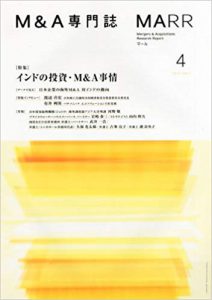
Buy this at Amazon / Buy this at Fujisan
I added links to Amazon and to Fujisan, but please note that images and links are not limited to the latest issue. At Amazon, it is easier to order one book, but at Fujisan, they offer discounts of up to 50% when subscribing. They delivers it to your home (limited to Japan only) and e-book version can also be read.
If you want to know other magazines, please consult your J-OS instructor or support team (^^)/
*1: As of July 9, 2018
*2: Source:Japan Magazine Publishers Association
If you are working in Japan, you will often go to karaoke in a second party etc.
If you sing at karaoke and you can enjoy it with the Japanese, you can enjoy deepening relationship with your business partners.
The difficult thing for foreigners will be choosing a song that will be appreciated by Japanese people.
So, I will teach you the site introducing the ranking of Japanese songs by age.
1950’s Ranking: http://nendai-ryuukou.com/1950/song.html
1960’s Ranking: http://nendai-ryuukou.com/1960/song.html
1970’s Ranking: http://nendai-ryuukou.com/1970/song.html
1980’s Ranking: http://nendai-ryuukou.com/1980/song.html
1990’s Ranking: http://nendai-ryuukou.com/1990/song.html
2000’s Ranking: http://nendai-ryuukou.com/2000/song.html
* You can jump to the ranking of TOP 50 for each year from the link above.
* If you click on each song title, you will be connected to YouTube so you can listen to that song.
The point is “Choose songs that were popular when people going along were around 18 to 22”.
Because people listen to music the most during these ages.
For example, in my case, I often listened music from 1996 to 2000, so I checked the yearly ranking of 1996 to 2000. As a result, I found that each TOP 50 songs by year were very familiar.
If a person going to karaoke with you is around 50 years old, that person may often listens to songs of 1984 to 1988, so it is better to check these pages.
http://nendai-ryuukou.com/1980/song/1984.html
http://nendai-ryuukou.com/1980/song/1985.html
http://nendai-ryuukou.com/1980/song/1986.html
http://nendai-ryuukou.com/1980/song/1987.html
http://nendai-ryuukou.com/1980/song/1988.html
If you know old Japanese songs, it will be a good conversational material. Also, learning the song lyrics is useful for Japanese study.

How many chat topics do you have?
April 26, 2018
How many chat topics do you have?
“Chat” is an easy talk without deciding the theme. As well as talking with family and friends, chatting is essential in dates and business.

When I ask the Japanese businessmen around me, they say that the chat is very important.
One of them insists that “If you do various interesting talks and impress the other person with your charm, business negotiations will proceed. If you talk about the product from the beginning, no one will succeed.”
I agree that it is more necessary to sell yourself than goods.
People who don’t run out of things to talk about are called “people with many drawers.”
Let’s hold a number of drawers in your head.
Here are four examples of chatting.
1, Weather talk
Japanese love to talk about the weather. It is likely to start from this topic in many cases. You do not have to talk from yourself. Please try to enrich the story of the weather that the other person speaks. Please keep in mind that you always return it positive way.
Example
A-san: “It is cold today, is not it?”
B-san: “Yes, it is said that it is the coldest winter this winter, but the cold weather makes hot sake delicious, so why do not we go drinking together next time?
2, News stories
From now on, let’s check the Japanese news. Besides big news, an interesting news such as “baby panda in Ueno” are also useful. If the other person likes animals or cute things, you may be able to mix those topics in the middle of the story. Also, Ueno is famous as a sightseeing spot, so you can use it when that story comes up. Television, internet and radio are useful, and referring advertisements in the train is also helpful to know outline of news. If you have news you care about, look it up on the spot with a smartphone.
3, Review your country
How well do you know about your country? Let’s check not only cultures and customs, but also current trends in your country. By knowing how it is different from Japan, you may be interested in the other party. You may also find the same place as Japan. A special products of your city is a good topic to talk about.
4, School days experiences
Have you tried hard on something? Not only your major field of study, but also part time job or your boom at that time can be a good topic for chat. It would be better to summarize some of the hardships into episodes rather than having fun. Japanese people are interested in how you have studied Japanese. Let’s recall, for example, what was difficult and what kind of words you liked.
Some people think that, “Even if I have stories, I cannot speak well!” However, listening to chats properly is one of the most important things. Especially for the people from Chinese background, I recommend that it is better to nod more than you normally do when listening the conversation.
I’d like to introduce you to funny non-Japanese celebrities living and working in Japan.

【Atsugiri Jason】
Jason became famous for his phrase “Why Japanese People!” to lament the difficulty of the Japanese language.
He wanted to be a comedian in Japan, but they don’t give out visas for that, so he came to Japan and joined an IT company that was expanding in Japan. Later, he attended an entertainer training school, and has continued both jobs until the present time.
【Pakkun】
This comedian works as a team with a Japanese comedian. He not only appears on comedy shows, he also does other work as the moderator of an English education program and a commentator. He is actually a prodigy and graduate of Harvard.
http://www.youtube.com/watch?v=VrAKjEMrX3I
【Chad Mullane】
Chad dreamed of becoming a comedian. When he came to Japan to study abroad he felt Japanese comedy is the best in the world. After graduating from high school, he entered entertainer training school. Now, in addition to working as a comedian, he also works as a translator, translating many Japanese comedy movies.
I have three reasons for telling you about these people.
First, they are all are very good at Japanese.
Second, just like Jason Atsugiri, you can come to Japan and work at a job for which a visa is relatively easy to get, and then find work in the kind of job you really want.
Third, Pak-kun and Chad get many offers to do work other than being comedians. In other words, it’s important to have a career plan once you arrive in Japan.
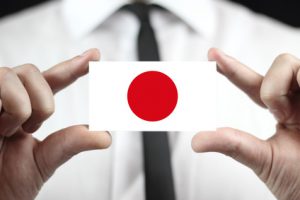
If you do not prepare, you will lose money!
February 19, 2018
You may already know that “it is better for you to take lesson with preparation.”
But, there are not so many people who are always preparing well.
I think this is a very wasteful thing.
Because it is not a school nor a lecturer but a learner who lose by not preparing.
Not only time but also money.
Let’s think about what each lesson will be in the following three patterns.
(1) With complete preparation
(2) With little preparation
(3) Without preparing at all
(1) With complete preparation
In the lesson, the lecturer will explain only “what students have prepared but did not understand”. And the lecturer uses all the remaining time for exercises with high learning effect such as applied practice and role play. In addition, lecturers can explain things not written in textbooks, and can also customize exercises according to the environment and preferences of learners.
(2) With little preparation
In the lesson, the lecturer can explain what is written in the textbook and can use a little time for practicing high learning effect such as applied practice or role play.
(3) Without preparing at all
In the lesson, the lecturer must explain each vocabulary and grammar one by one and must use all the time for them. They cannot teach whole contents what they planned and they have to resume from the middle in the next lesson.
I will quantify and describe the above three patterns so that you can imagine. (*These figures are hypothetical, as it is aimed at simplifying the story, there is a possibility that it is not accurate.)
In each of the above cases, we assume the amount that you can learn in one lesson as follows.
(1) 150
(2) 80
(3) 40
And assuming that the total amount you have to learn in order to finish a course is 2000, the number of lessons required for each case is as follows. (In case a lesson progresses according to learners’ proficiency level)
(1)13.3 lessons
(2)25 lessons
(3)50 lessons
And assuming that one lesson is 10 US dollars, the necessary cost to complete the course is as follows.
(1) $ 133
(2) $ 250
(3) $ 500
In other words,
The person of (2) has to pay 1.875 times the tuition fee of (1).
The person of (3) has to pay twice the tuition fee of (2).
The person of (3) has to pay 3.75 times the tuition fee of (1).
Everyone wants to save both time and money, right? That’s why I recommend preparing well. Moreover, those who prepare well can do applied practice and customized exercises, which has the effect of making the lesson fun.
Which would you prefer, “Cost-effective good and fun lesson” or “Cost performance bad and boring lesson”?

Many foreigners like learning Japanese through various media such as comics and animations. But, some business people may feel this is not enough. Given that, we have selected some business-theme related Japanese TV dramas that both Japanese learners and business people enjoy. The following are my favorite Top 3 and other popular dramas.
No1
“Hagetaka”
It’s a business drama that depicts the battle between Japanese bankers trying to prevent buyouts by foreign investors. It is said that the awareness of the threats to acquisitions raised among Japanese businesspeople after broadcasting this drama. Recommended for those who are interested in the topics like M&A, corporate rehabilitation and foreign fund.
Watch this program on DVD
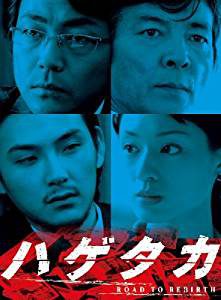
No2
“Hanzawa Naoki”
The drama follows the story of Hanzawa Naoki, a banker working for the largest bank in Japan, faces numerous obstacles from upper management as he climbs his way up the ranks.
The story is interesting that it offers an in-depth look at the constraints of those close-knit in bank’s internal structure. It is one of the super popular TV drama with a consistent high rating of 42.2%. A popular signature phrase of Hanzawa, “Yararetara yarikaesu! Bai gaeshi da!!” (An eye for an eye! I will just fight back twice as much!!”), was also chosen as a buzzword for 2013.
Watch this program on DVD
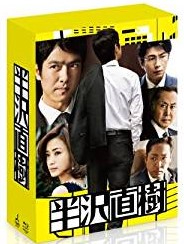
No3
“SoratobuTaiya”
A drama with the theme of a flying tire accident and hiding recalls by major automakers. It gives a realistic depiction of the conflict between people working in an organization called “company”, and the relationship between large companies and their subcontractors.
Watch this program at AmazonPrime(30 days free trial). https://goo.gl/PsFH3b
Watch this program on DVD http://amzn.to/2r3nf0L
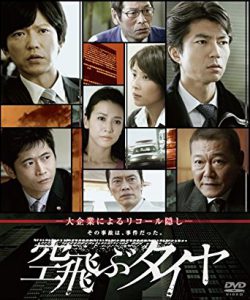
“Kabuka Bōraku”
It depicts a restructured mega supermarket targeted by bombings terrorism, and the widespread darkness among its main bank. It’s a drama that combines various elements of financial drama, corporate suspense and police drama.
Watch this program at AmazonPrime(30 days free trial). https://goo.gl/ss0mGb
Watch this program on DVD http://amzn.to/2r37pmY
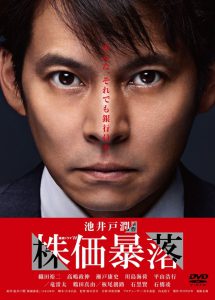
“Kansa Hōjin”
It’s an economic drama that depicts the battle between a company and an audit corporation.
With the theme of accounting audit, it’s recommended for people involved in accounting and auditing.
Watch this program on DVD http://amzn.to/2r3m5ma
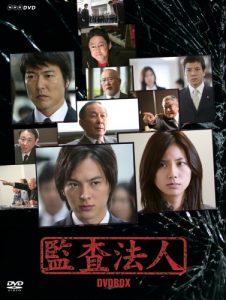
“Genkai Shuraku Kabushikigaisha”
The story is about reconstruction of rural areas where have experienced depopulation. A management consultant has appeared in rural areas and tries to reconstruct the area though agriculture with a group of young people from city. It’s recommended for people who are interested in topics like regional reconstruction, consulting, as well as Japanese mentality in the countryside.
Watch this program at VideoMarket(1 month free trial). https://goo.gl/GkYCxB
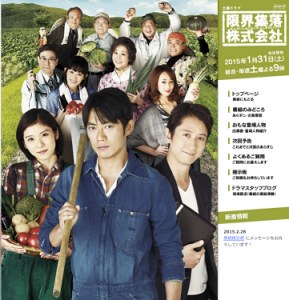
“Saisei Kyoryu”
A human drama that takes place in logistics industry, depicting the conflict and regeneration of a man who, although has abilities, is still suffering a demotion transfer after his failure. You may be drawn into the story because of its detailed description of the restraints of Japanese companies.
Watch this program at AmazonPrime(30 days free trial). https://goo.gl/RG0gci
Watch this program on DVD http://amzn.to/2r38sTW
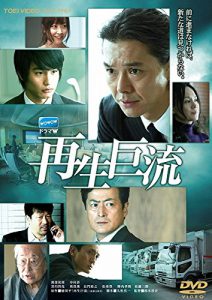
“Shitamachi Rocket”
The story is related to the development of domestic rocket engine, depicting a small factory in downtown fighting against a huge company. It’s recommended for those who are interested in small and medium-sized manufacturers which support the Japanese manufacturing.
Watch this program at VideoMarket(1 month free trial). https://goo.gl/GkYCxB
Watch this program on DVD http://amzn.to/2r3mZPl
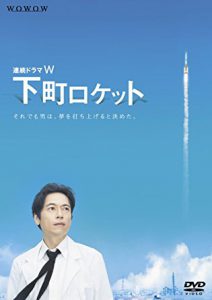
“Cheisu: Kokuzei sasatsukan”
The story is about a huge asset of 600 billion yen, depicting the battle between the National Tax Inspector and the tax evasion consultant. It’s recommended for those who are interested in tax consulting or tax havens.
Watch this program at VideoMarket(1 month free trial). https://goo.gl/GkYCxB
Watch this program on DVD http://amzn.to/2s60kR2
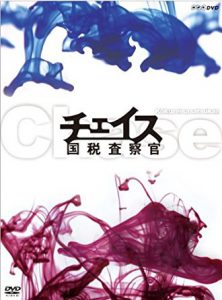
“Hanasaki Mai Speaks Out”
The story follows a female employee working for the bank 5 years, overcomes many challenges one after another within the Bank. Although it’s a comic origin story that lacks reality, everyone can easy to enjoy.
Watch this program at VideoMarket(1 month free trial). https://goo.gl/GkYCxB
Watch this program on DVD http://amzn.to/2r3tima
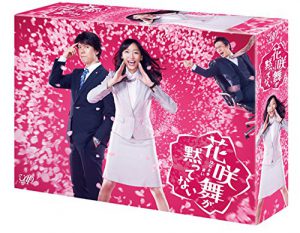
“Made in Japan”
It’s a drama that depicts a giant electric manufacturer, just before bankruptcy, attempts to rebuild in the lithium ion battery market. It’s recommended for those who are interested in Japanese manufacturing industry and international competition with foreign enterprises.
Watch this program at VideoMarket(1 month free trial). https://goo.gl/GkYCxB
Watch this program on DVD http://amzn.to/2r3F3sJ
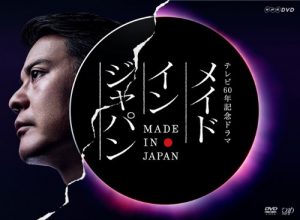
“Roosevelt Game”
Medium-sized precision instrument manufacturers on the verge of bankruptcy are facing the crisis of absorption merger. The story depicts a miracle reversal play “Roosevelt Game” by overlapping the fight against competitors with the struggle of company’s baseball team.
Watch this program at AmazonPrime(30 days free trial). https://goo.gl/cK14kk
Watch this program on DVD http://amzn.to/2r3sFsB
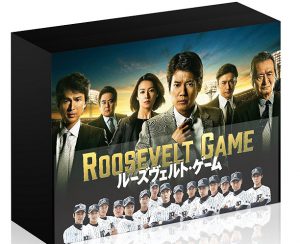
“LEADERS”
The story is based on Toyota’s founder, Kiichiro Toyoda, depicts the people who spend their whole lives on domestic automobile manufacturing. It’s recommended for those who are interested in Japanese manufacturers, automobile manufacturing, Toyota etc.
Watch this program at VideoMarket(1 month free trial). https://goo.gl/GkYCxB
Watch this program on DVD http://amzn.to/2r3zMkP
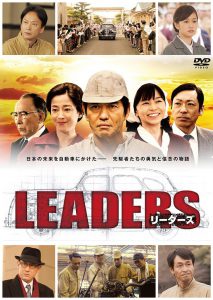
“Kanryotachi no Natsu”
It tells the story of the industries and government officials, who are carrying out their mission to make Japan, the defeated country, as affluent and wealthy as the western world. It’s recommended for people who are interested in Japan at the time of high economic growth.
Watch this program on DVD http://amzn.to/2r3hhwW
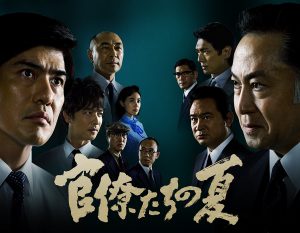
“Shizumanu Taiyō”
The drama depicts the battle of company labor union modeled on Japan Airlines in the 1960 – 1980s. With the theme of labor unions, it’s recommended for people involved in personnel affaires and labor.
Watch this program on DVD vol 1 http://amzn.to/2r3m8hS
Watch this program on DVD vol 2 http://amzn.to/2r3tEsW
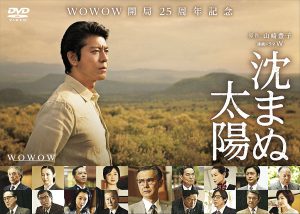
“Taiyo no Wana”
It’s a romantic-suspense story that depicts the protagonist is suspected of being an industrial espionage in relation to the technology of solar power generation. It’s recommended for those who are interested in themes such as intellectual property or patent warfare.
Watch this program on DVD http://amzn.to/2s69NYv

“Top sales”
A story of a woman who changes her career and eventually becomes a president of a car sales company in a male-oriented society of the 1970’s. It’s recommended for people who are interested in Japanese car industry after the war, or successful career woman in Japan. Since Japanese famous cars such as Toyota 2000 GT are also appeared, car fans can also enjoy the story.
Watch this program on DVD http://amzn.to/2s67JA2

“Rich Man, Poor Woman”
It’s a romantic comedy drama, tells a love story between the president of an IT venture company and a student from the University of Tokyo right out of college. Although some business people may feel the content is not enough, IT-related people may enjoy, since it’s a story taken place in an IT company.
Watch this program at FujiTV on demand https://goo.gl/ORjIRw
Watch this program on DVD http://amzn.to/2r3u9TI
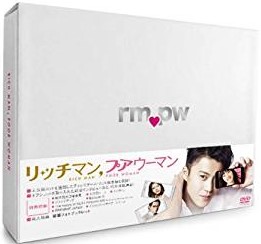
Some occupations and industries that I’d like to recommend are listed. All the stories are interesting, and I do believe everyone else can enjoy the stories. Let’s practice listening skills while enjoying Japanese TV dramas!
How many Japanese proverbs do you know?
January 24, 2018
These days on YouTube, many non-Japanese express their opinions on Japan and discuss how to learn Japanese.
Today, I’d like to introduce an interesting video explains Japanese proverbs in a quiz format;
https://www.youtube.com/watch?v=_KoQYyeGfy0
Since many of Japanese proverbs reflect the Japanese culture, sometimes the knowledge on them helps understanding the Japanese values. The followings are some of sayings in this video. Well, how many Japanese proverbs do you understand??
「Saru mo ki kara ochiru」
「Kappa no kawa nagare」
「Onnagokoro to aki no sora」
「Ishibashi o tataite wataru」
「Jakuniku kyooshoku」
「Sawaranukami ni tatarinashi」
「Deru kui wa utareru」
「Uma no mimi ni nenbutsu」
「Juunin toiro」
「Ashita wa ashita no kaze ga fuku」
「Donguri no seikurabe」
「Tsuki to suppon」
「Neko ni koban」
「Makeru ga kachi」
「Nasake wa hito no tamenarazu」
「Nou aru taka wa tsume o kakusu」
「Koubou fude o erabazu」
If you are interested in the Japanese sayings, please refer to this site as well;
http://www.geocities.jp/tomomi965/ichiran.html
Although I knew only about the half of them, 489 pieces of the Japanese proverbs are listed in this site. I believe that knowing Japanese proverbs can be some tips for better communication with Japanese.

When to start studying for business Japanese?
January 24, 2018
Some of J-OS members may be studying Japanese language now for current work or for future career opportunities.
As for the question of when you should start studying for business Japanese, I recommend all Japanese learners to build up a basic knowledge of Japanese grammatical structures and vocabulary at first.

That is because most of Japanese expressions and terms often used in business situations are difficult and time-consuming to understand for the beginner level, which is not an efficient way of learning Japanese.
So, which stage will be the best to begin business Japanese for learners?
Although there are recently some business Japanese textbooks targeting beginner level, I should say that JLPT N3 or level 5 of J-OS level map are at least required.(Such factors as needs, urgency or receptiveness vary between individuals, of course.)
Skipping basic level of Japanese is something like beginning a triathlon without any previous preparation.
First of all, you need to improve your basic physical fitness by such step-by-step process as mastering 10 km marathon and then 1 km swimming. Secondly, try to extend the distance gradually with less impact on your body. Finally, as a result, you will be able to cross the finish line in less time than expected.
As you can see, making a realistic plan is an important key to successful Japanese language learning.

Is the traffic signal “green” or “blue”?
January 24, 2018
Do you know why the word “blue” expresses a color of new leaves which is actually “green”?
In old Japan, it’s said that there were only four words used to represent colors: black, white, red and blue.

So the word “blue” had a broad meaning that included green and purple. Even in today’s Japan, the distinction between green and blue is not very clear.
For example, we say the color of the traffic signal that indicates you can proceed is “blue”, and we also say “blue apples”, “blue insects” and “blue vegetables. There is a long-standing tradition in Japanese language of using the word “blue” to describe green things.
In English you can use the word “green” to indicate that someone is inexperienced, such as “He’s still green.” In Japanese, we can express the same concept using color, but we say “He’s still blue.” You may find it interesting to compare differences in expressions involving green and blue in each of your own languages.

Categories
Recent Posts
- I cannot keep up with meetings conducted in Japanese. Are there any good ways to study?
- Are there any good writing materials for business Japanese? (Three keys to developing business Japanese writing skills.)
- Are there any free materials available for studying business Japanese reading?
- Should I read newspapers for reading practice in business Japanese?
- Are there any good business magazines to practice reading business Japanese?
Archives
- August 2022
- June 2022
- May 2022
- April 2022
- March 2022
- February 2022
- January 2022
- October 2021
- January 2021
- August 2020
- July 2020
- June 2020
- May 2020
- April 2020
- March 2020
- February 2020
- January 2020
- December 2019
- November 2019
- October 2019
- September 2019
- August 2019
- July 2019
- June 2019
- May 2019
- April 2019
- March 2019
- February 2019
- January 2019
- December 2018
- November 2018
- October 2018
- September 2018
- August 2018
- July 2018
- June 2018
- May 2018
- April 2018
- March 2018
- February 2018
- January 2018
- November 2017
- October 2017
- July 2017
